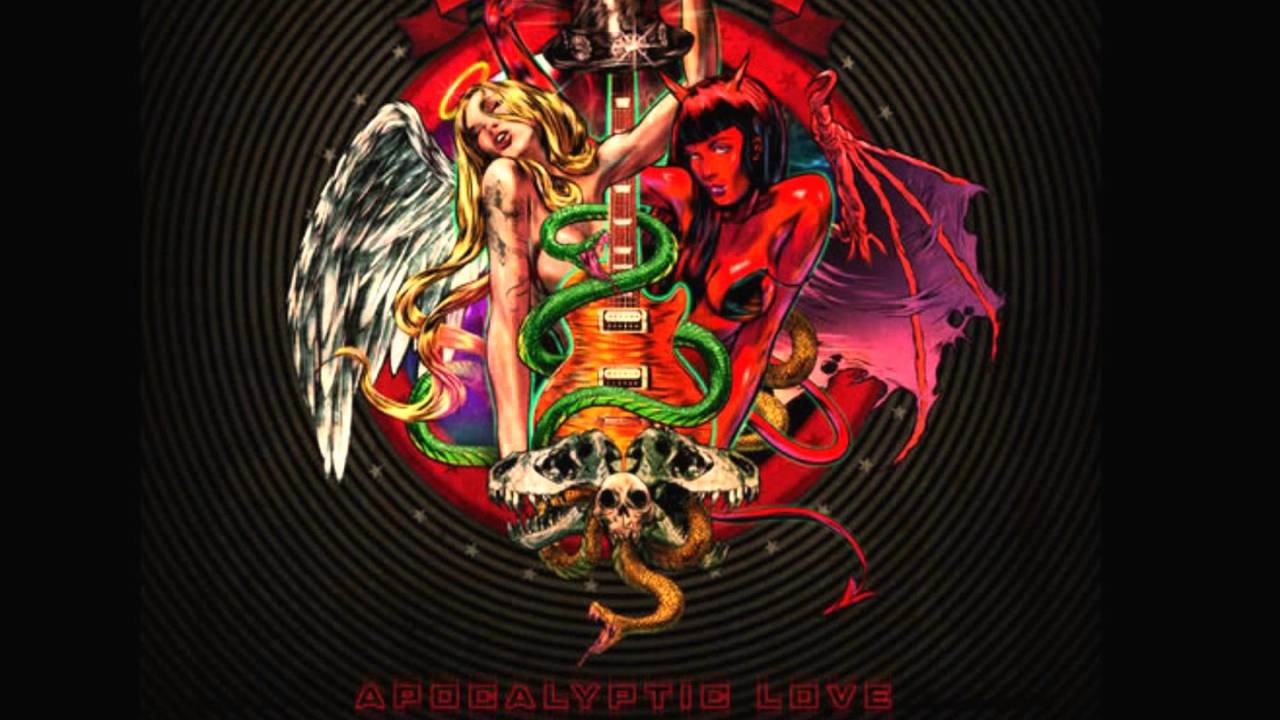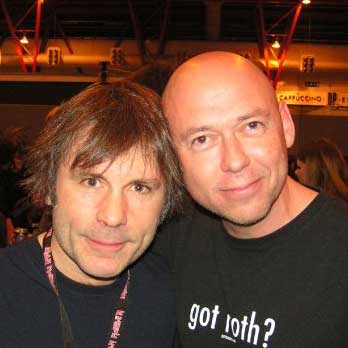It was another defining moment in a long and brilliant career. With Apocalyptic Love, Slash’s new band came of age.
The name was a bit of a mouthful: Slash Featuring Myles Kennedy And The Conspirators. It didn’t roll off the tongue, like Guns N’ Roses or Velvet Revolver. But the message was clear: Apocalyptic Love was not another Slash solo project, like the eponymous album that preceded it in 2010. This was a band album – albeit a band in which the guitarist and his conspirator-in-chief, Myles Kennedy, took star billing. For Slash, this really was a no-brainer. Of all the big-name singers he had utilised on that solo album – including Ozzy, Lemmy, Iggy, Ian Astbury and Chris Cornell – it was Kennedy who shone brightest, on the tracks Starlight and Back From Cali. Subsequently, Slash chose Kennedy to front his touring band, backed by bassist Todd Kerns, drummer Brent Fitz and rhythm guitarist Bobby Schneck. Across the ensuing world tour, this unit hardened into a tight, kick‑ass, rock’n’roll band. “It was really magical,” Slash said. “A throw-together band that was just right.” And from that point, his logic was simple: get that magic on tape. One member of the touring band would not feature in the making of Apocalyptic Love. With both Slash and Kennedy playing rhythm guitar on the album, Bobby Schneck was not required. But as Kennedy said: “There’s a really strong band vibe to this record – something that came from us being out on the road together.” This vibe was enhanced by the way the album was recorded, much of it cut with the band jamming in one room at Barefoot Recording Studios in Hollywood, a facility owned by producer Eric Valentine. “The whole album,” he explained, “was recorded like a live performance.” That’s evident from the first few seconds of the title track. There’s a little bleed from Slash’s guitar before Fitz counts the band in with clicks of his drumsticks to kick the song into gear. It’s an echo of one of Slash’s favourite bands, AC/DC – specifically, the raw production values and loose spontaneity of their 1977 classic Let There Be Rock. And that gritty, no-frills approach – the sound of a band live in the studio – runs throughout Apocalyptic Love. There are echoes, too, of Slash’s past in certain songs, notably on Standing In The Sun, in which he plays a twisting lead melody recycled from Paradise City. But the essence of the album is classic rock for the modern era. Above all, the power in this music is testimony to the faith that Slash placed in Myles Kennedy. Ten years earlier, Kennedy had passed up the opportunity to audition for Slash as a potential singer for Velvet Revolver – a decision he made reluctantly, his confidence shattered after he had developed tinnitus. But with Apocalyptic Love, he and Slash wrote every song together – from hard-rock blasters such as One Last Thrill and Halo to the melancholy Bad Rain, evocative of Nirvana and Soundgarden, and the beautiful ballad Far And Away. Apocalyptic Love was a coming of age for this band, and for Slash and Kennedy as a guitarist and a singer who could truly relate to each other. And this, given Slash’s history, was something to be treasured.

